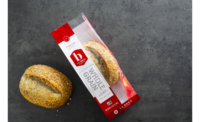![]()
Interview With a New Consumer
Confectioner’s exclusive 2004 Annual Chocolate/Candy Purchasing
Survey reveals that the shifting diets of consumers are altering their needs
for treats. Are you taking notes?
The winds of change have touched down on the candy
consumer. And much like with Mother Nature, they can be both delightful and
damaging. Changing diets, health concerns, nutritional information demands,
childhood obesity, channel blurring, diabetes, and portion control —
these are just some of the recent factors influencing the purchasing
behavior in the candy industry.
The findings emerged this spring when — in search
of a more accurate market map and forecast — Confectioner magazine
commissioned an online research survey on consumers’ attitudes and
behaviors relative to chocolate and non-chocolate confections. The
following are some of the highlights from our nationally representative
survey.
Before proceeding further with our findings, it should
be emphasized that this is an attitude and perception survey. There are
occasions when consumers’ perception of their purchasing behavior
does not match with sales statistics from authoritative sources including
Information Resources Inc. and ACNielsen. That is because consumers are
reporting what they perceive their behavior to be, not necessarily what it
actually is.
- The study shows that 93 percent of consumers
purchased chocolate (defined as “products containing
chocolate”) and 72 percent purchased non-chocolate candy (defined as
“does not contain chocolate”) in the past six months. Among
carb-counting consumers surveyed, 86 percent bought chocolate since
November — more than the number of carb-counters who purchased
low-carb foods in that timeframe.
In the past month, 81 percent of consumer survey
participants purchased chocolate; 59 percent purchased non-chocolate candy.
Three of four consumers treated themselves to chocolate in the past week;
of those buying in the past week, 27 percent said they ate chocolate
yesterday.
- Chocolate has an extremely high incidence of impulse
purchasing — 44 percent. The data shows
that 56 percent of people living alone say they purchase chocolate on
impulse; 37 percent of food shoppers caring for a family of five or more
buy chocolate on impulse. Higher incomes negatively affect impulse
chocolate spending — 54 percent of survey participants with household
income less than $45,000 purchase chocolate on impulse; among households
with income over $75,000, an impulse buy occurs 40 percent of the time. (It
should be noted that these figures represent consumers’ perception of
their impulse purchases. Industry figures show significantly higher actual
impulse purchase percentages, but many times a shopper doesn’t recognize that, in fact, in-store merchandising triggered
their purchase.)
- Non-chocolate candy, too, has an extremely high
incidence of impulse purchasing — 45 percent. The data show that 67 percent of people living alone say
they purchase candy on impulse; 42 percent of families with five or more
members report buying candy on impulse.
- Most respondents say they are spending about the same
or more on chocolate and non-chocolate. Eight
percent of consumers say they are spending more on chocolate in 2004
compared with 2003. Among people ages 35-44, 13 percent say they are
spending more on chocolate this year versus last. Overall, 76 percent
report spending about the same on chocolate, but 15 percent are spending
less. Of the carb-counting consumers, 19 percent say they are spending less
on chocolate this year.
“Increased cravings” was the main reason
consumers said they were purchasing more chocolate. One in four said a
feeling of prosperity motivated them, and one in five mentioned the health
benefits of chocolate. For those who have curbed their chocolate
consumption, health concerns were the main reason why.
As for non-chocolate candy, overall 9 percent of
consumers are spending more this year (mostly buying treats for children).
A total of 76 percent are spending the same on non-chocolate candy in 2004
as they did in 2003, and 15 percent have decreased their non-chocolate
candy spending— motivated by health concerns.
- One in four consumers believes that people deserve a candy
bar every day. Among carb-counters, only 17 percent believe this is a daily-deserve.
In addition, 38 percent of carb-counters are eating more sugar-free chocolate/candy
than they did a year ago. Among other consumers, 10 percent have increased their
consumption of sugar-free confectionery. Overall, 11 percent of survey respondents
said they are on a strict low-carb diet.




